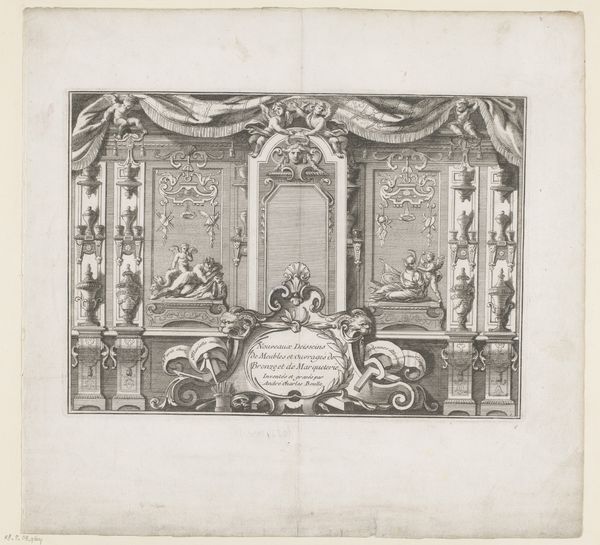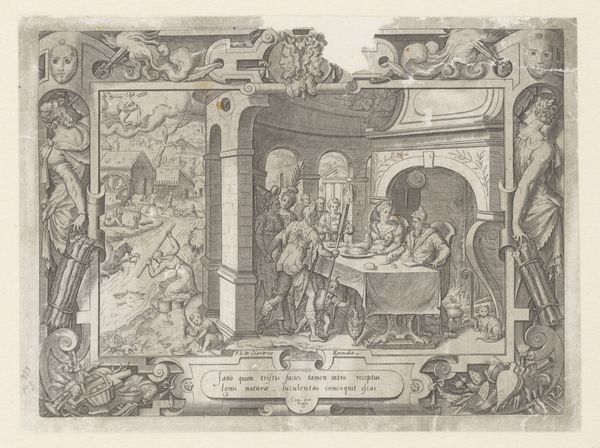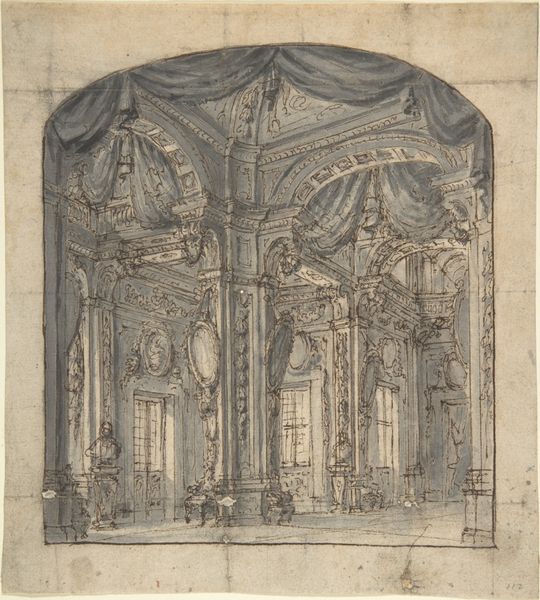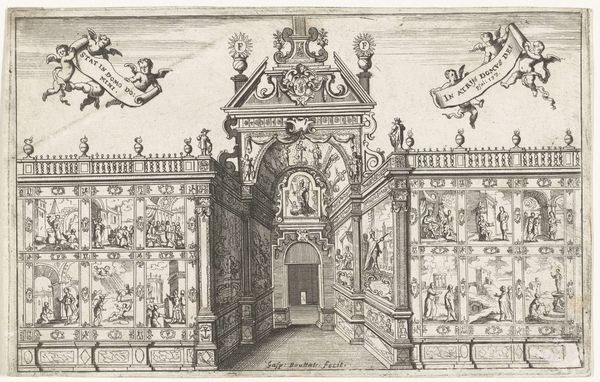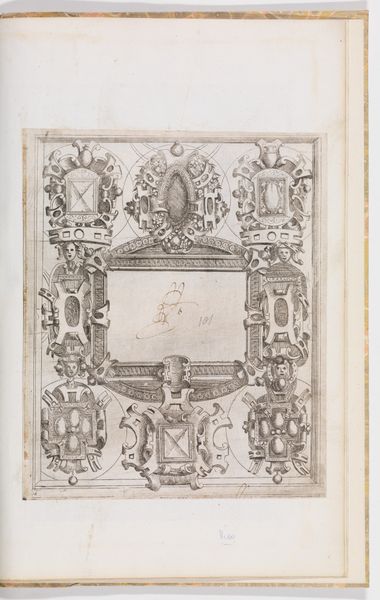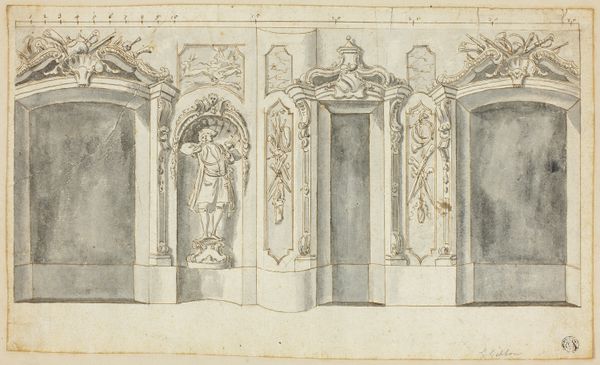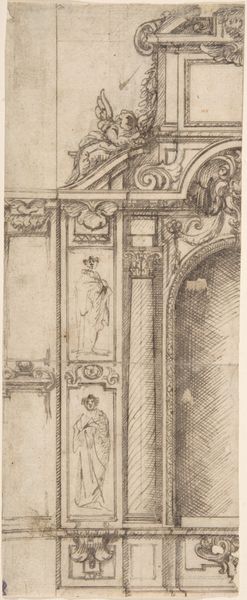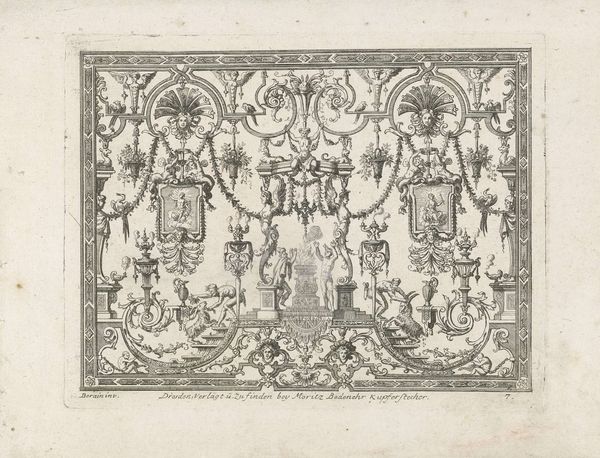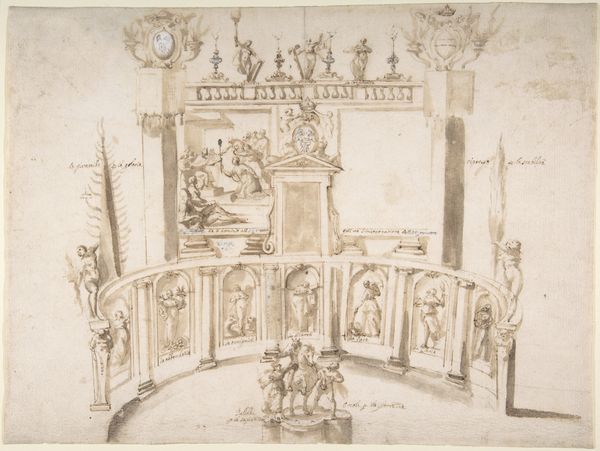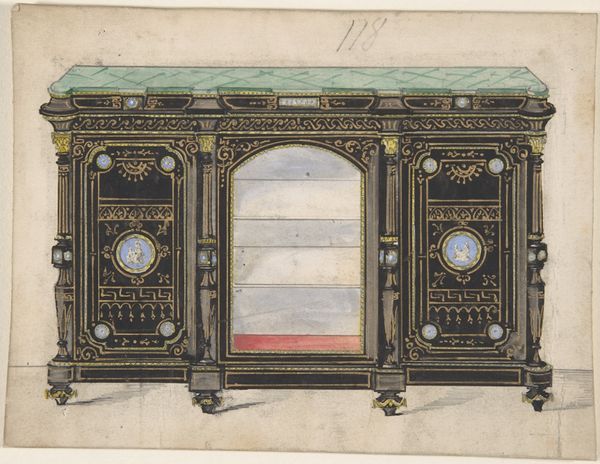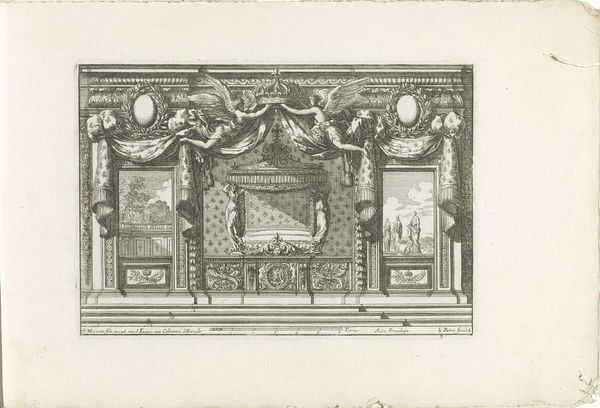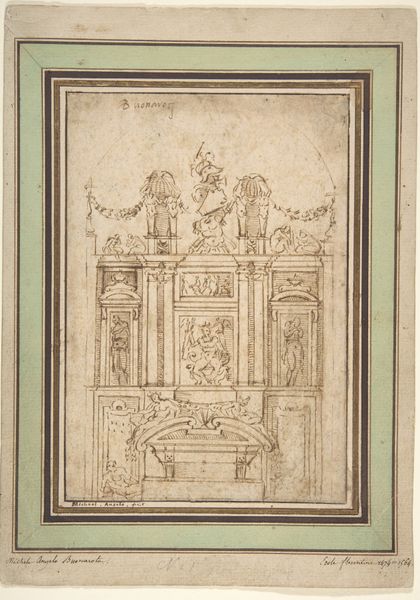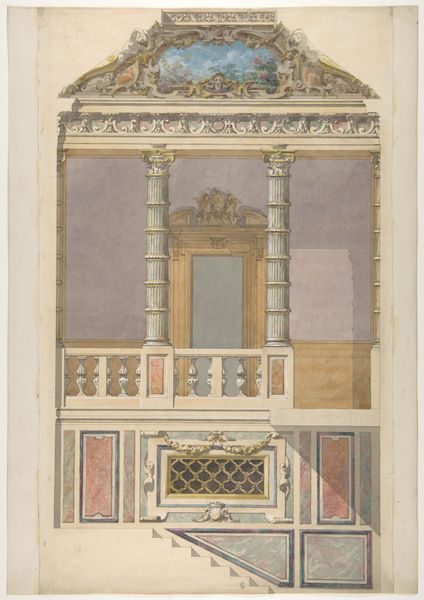
drawing, coloured-pencil, architecture
#
portrait
#
drawing
#
coloured-pencil
#
form
#
11_renaissance
#
coloured pencil
#
cityscape
#
architecture
#
building
Dimensions: height 310 mm, width 443 mm
Copyright: Rijks Museum: Open Domain
Curator: Isn't this a delightful find! We’re looking at a drawing from around 1640 to 1660, titled "Ontwerp voor tuingevel met portieken en een borstbeeld," which translates to "Design for a Garden Façade with Porticos and a Bust." It’s currently held in the Rijksmuseum. It's rendered in colored pencil, showcasing an architectural design, most likely for an exterior garden wall. What's your initial take? Editor: It gives me a feeling of subdued grandeur. There's a formality in the architectural elements, yet the colour palette is restrained, almost melancholic. The emptiness of the side niches hints at absences, don't you think? Curator: Absolutely! It is melancholic. It's as though the architecture itself is breathing a sigh. The artist, who remains anonymous to us, captured this transient state so well with colored pencil. Think of the Dutch Golden Age and these displays of wealth, culture, yet also hints of impermanence. Editor: Precisely. Garden façades such as this functioned as sites of display and performance. They are assertions of power but were always contingent on who was being displayed or, in this case, who the bust was. How do these types of representations support existing hierarchies or resist social ones? Curator: It's a good question! Perhaps that the bust is in the center symbolizes a yearning for immortality through representation? What better way than sculpture to immortalize a persona? Although the person represented in the bust remains nameless, there seems to be an air of confidence to this project. Editor: That said, I can't ignore those lion heads draped in swag. In art history, lions are potent symbols of sovereignty, dominion, and even justice. What narrative threads do you think this type of ornamental choice helps to reinforce at the time? What statement about class and cultural capital is implied through these very intentional aesthetic choices? Curator: Indeed! So it makes you wonder: would this kind of aesthetic, back then, signal power or oppression, considering how exclusionary it must have been to build walls like these? Food for thought as one imagines how society must have reacted at the time! Editor: Agreed. Ultimately, this sketch asks questions about public versus private, permanence versus decay, who is remembered and who is forgotten. Curator: So true. These façades stood, quite literally, at the threshold. Such reflections linger with you. Thank you for opening our eyes to the drawing's richness beyond its formal beauty.
Comments
No comments
Be the first to comment and join the conversation on the ultimate creative platform.
